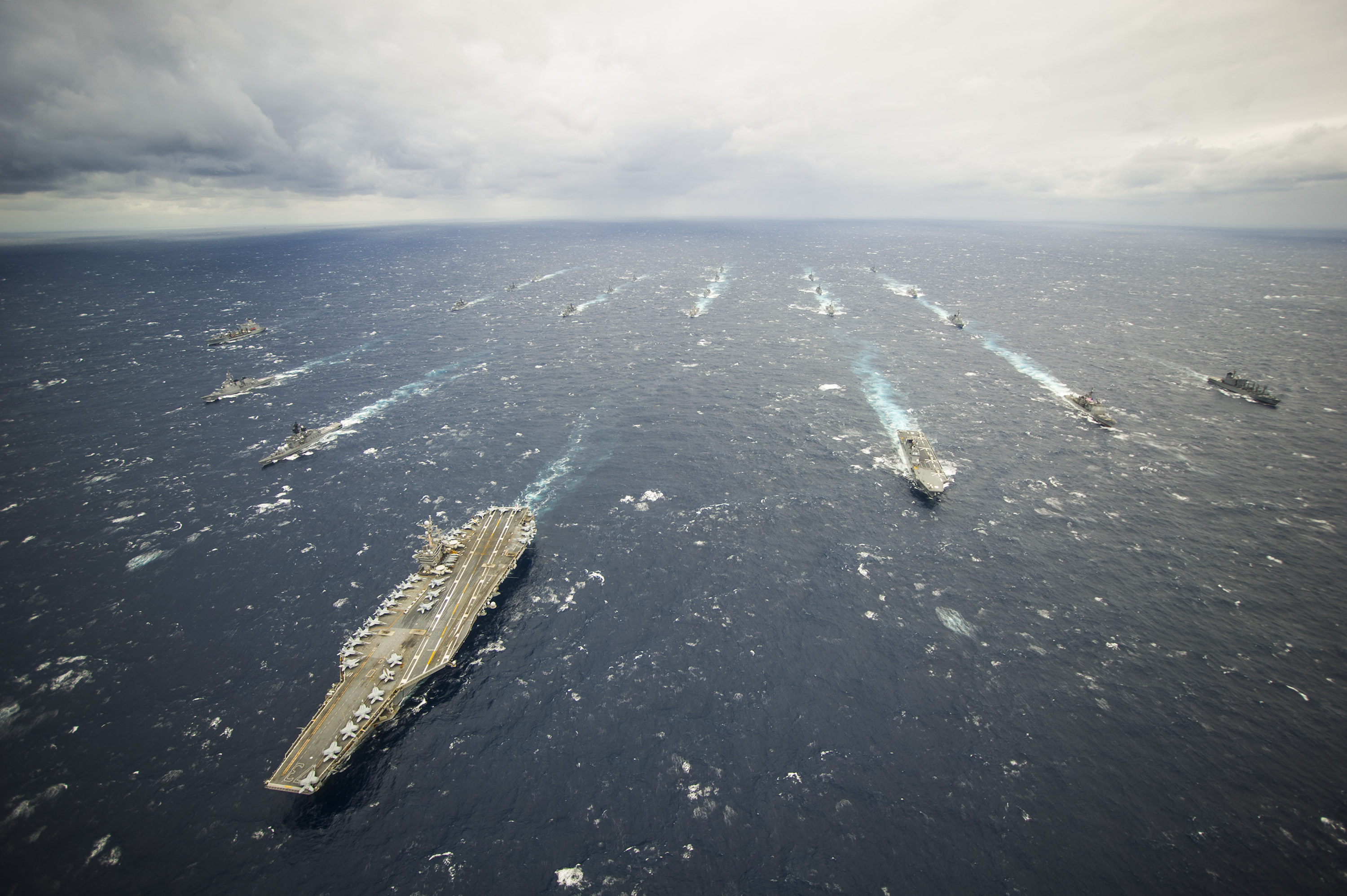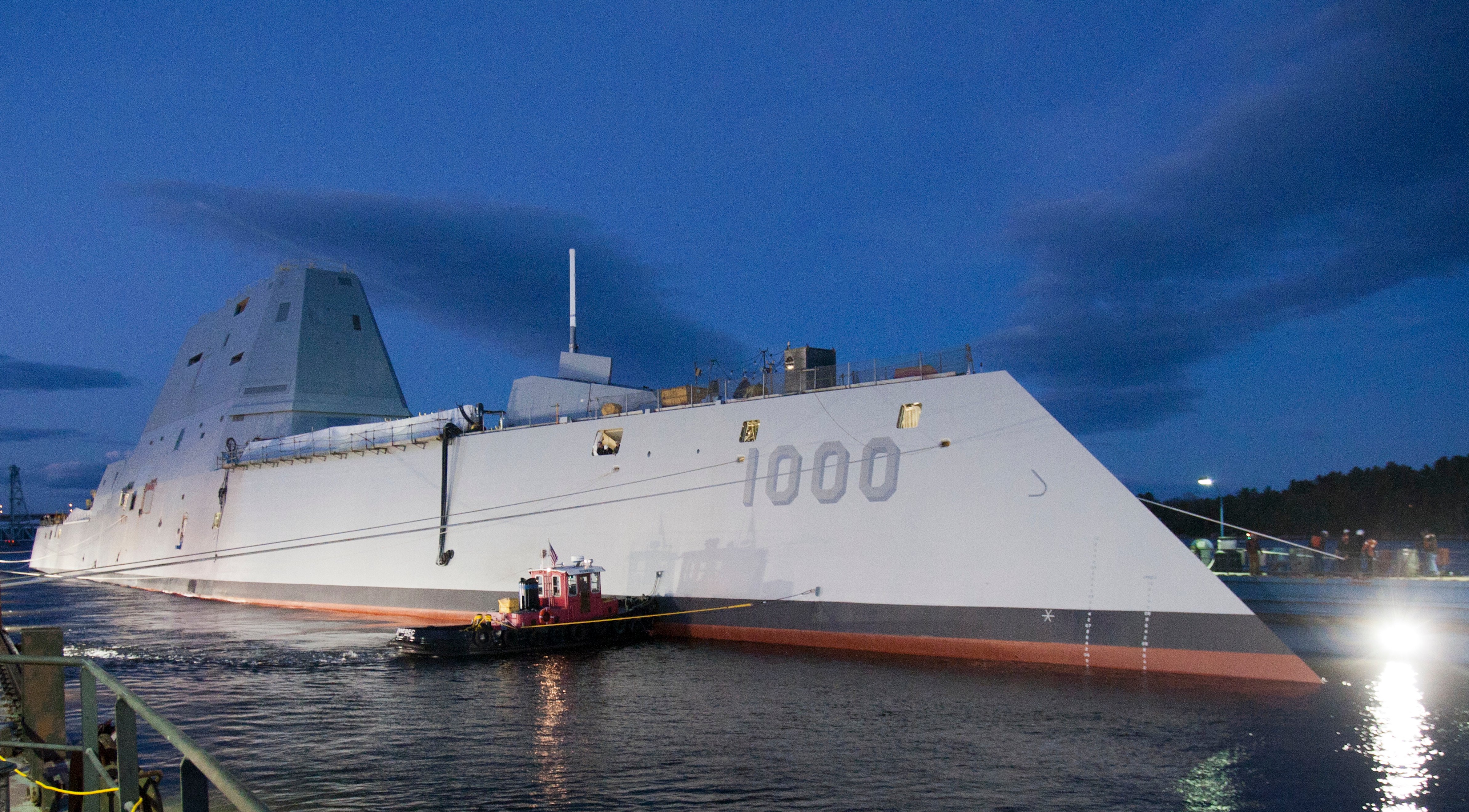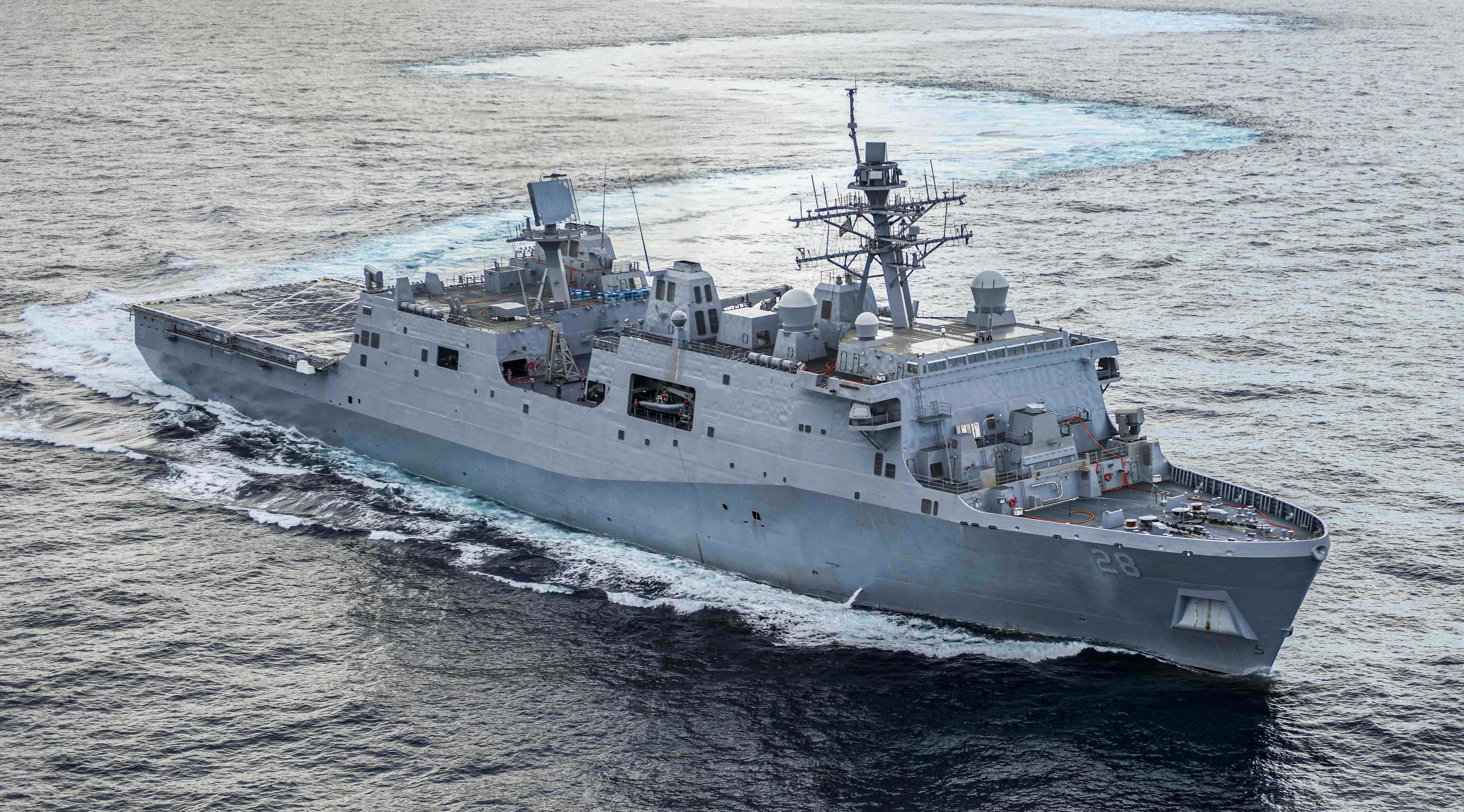
Navy leadership hopes to have a surge force of three Carrier Strike Groups (CSG) and three Amphibious Ready Groups (ARG) by 2020 to respond to major contingencies, compared to today’s one CSG and one ARG – but those plans depend on Congress fully funding the Navy’s implementation of the Optimized Fleet Response Plan (O-FRP), Chief of Naval Operations Adm. Jonathan Greenert said at a Senate hearing on Tuesday.
Greenert told the Senate Armed Services Committee that “our combatant commanders require that three Carrier Strike Groups and three Amphibious Ready Groups be ready to respond within 30 days to a crisis; that’s our covenant to them.” But one casualty of sequestration cuts has been funding for maintenance and training, which has led to dramatically reduced readiness of forces that are not deployed or next-to-deploy.
Assuming the best case scenario – “a predictable, stable budget at the right level” and no major contingencies to respond to – “we might be able to recover from the accumulated backlogs by 2018 for our Carrier Strike Groups and by 2020 for Amphibious Ready Groups. So that’s at least five years after this first round of sequestration.”
If a second round of sequestration hits in Fiscal Year (FY) 2016, though, those goals would be unachievable. The president’s budget request represents the “absolute minimum funding levels” to support the Navy’s plans for readiness and forward presence.
Greenert told USNI News after the hearing that adhering to the O-FRP requires fully funding multiple pieces of the Navy budget.
“You’ve got to get the shipyard capacity right; if you don’t have the shipyard workers, you don’t get the maintenance done,” he said.
“You’ve got to give [the ships] enough time in there, so you’ve got to get them in on time, [have a] good work package, very clear, and you’ve got to have the workers.”
“You can’t build the workers overnight – you hire somebody and they’re not really a true worker for another two years, when they qualify welding or electrician or whatever the heck it is,” he continued, noting that the public shipyards have not been fully funded and able to maintain a full workforce under sequestration. “You’ve got to man the ships sooner than we have been so that they can train more quickly and more effectively. And then you’ve got to have the ranges available so they go out to the range and get things done on time.”
Without at least as much funding as the Navy requested in its FY 2016 budget plan, those pieces won’t all fall together properly to support the O-FRP.
Greenert added during the hearing, however, that forward presence wouldn’t suffer if sequestration returns in FY 2016. He told the committee that “you won’t see much reduction under a Budget Control Act (BCA) scenario in our forward presence.” The Navy will continue to increase the number of forward-deployed and forward-stationed ships in places like Japan, Singapore and Guam, and it will increase presence in the U.S. European Command area of responsibility to help address increasing threats there and in U.S. Africa Command.
Asked by Sen. Roger Wicker (R-Miss.) how the Navy would maintain its planned forward presence levels despite sequestration cuts, Greenert said “those hits, if you will, will take place in our ability to respond, to supplement those forces forward. And those forces forward won’t be as modern as they need to be, we’ll have dramatic decreases in modernization.”
He also noted earlier in the hearing that deployment lengths have been up since sequestration went into effect, meaning more wear and tear on both people and platforms.
Also during the hearing, Greenert and Marine Corps commandant Gen. Joseph Dunford addressed a munitions shortfall, also caused by sequestration.
Greenert – rattling off most of the kinds of munitions in the inventory – said the inventory was sufficient today, but by 2020 the Navy would face a shortfall in air-to-air missiles, surface-to-surface cruise missiles, some air-to-ground like the Joint Standoff Weapon, long- and medium-range air-to-air missiles, and lightweight and heavyweight torpedoes. That shortfall would occur even if the president’s FY ’16 budget levels were enacted, meaning Congress would have to invest beyond the request to avoid this widespread shortfall for the Navy.
Dunford said the Marine Corps also has a sufficient stockpile today but would face shortfalls in the Raytheon-built AGM-154 Javelin and BGM-71 TOW anti-tank weapons, as well as the Lockheed Martin-built M142 High Mobility Artillery Rocket System (HIMARS).
Dunford said that, as the Marine Corps has faced budget cuts, “what we end up doing is taking risk at home station and against a major contingency, and that’s exactly what we’ve done in the case of ammunition.”

Talking to reporters after the hearing, Greenert and Navy Secretary Ray Mabus addressed a report by Bloomberg that USS Zumwalt (DDG-1000) would deliver later than planned.
“We’ve known about this, this wasn’t news,” Mabus said, saying the first ship in the class would deliver about two years later than originally expected but that the third and final ship in the class is still on track.
Greenert clarified that the delivery date has been pushed back multiple times as the workload for this new – and in many ways unique – class of ships becomes clearer. He said most recently the Navy had planned to take delivery of Zumwalt in August of this year, so pushing it back until November is “not that big of a deal yet, but we’ve got to watch this thing because it’s very cutting-edge.”
Mabus said Zumwalt is the first all-electric ship in the fleet, and with the class being truncated at three hulls, it has proven hard to hire an adequate amount of electricians to work at General Dynamics Bath Iron Works.
Greenert said the rest of the testing that needs to take place will be complicated because the systems are so complex and interconnected, so “we’ve got to manage it very very closely or we’ll have further slippage.”
Navy spokesman Capt. Danny Hernandez added that the second ship in the class, USS Michael Monsoor (DDG-1001) would deliver in November 2016 instead of December 2015.





